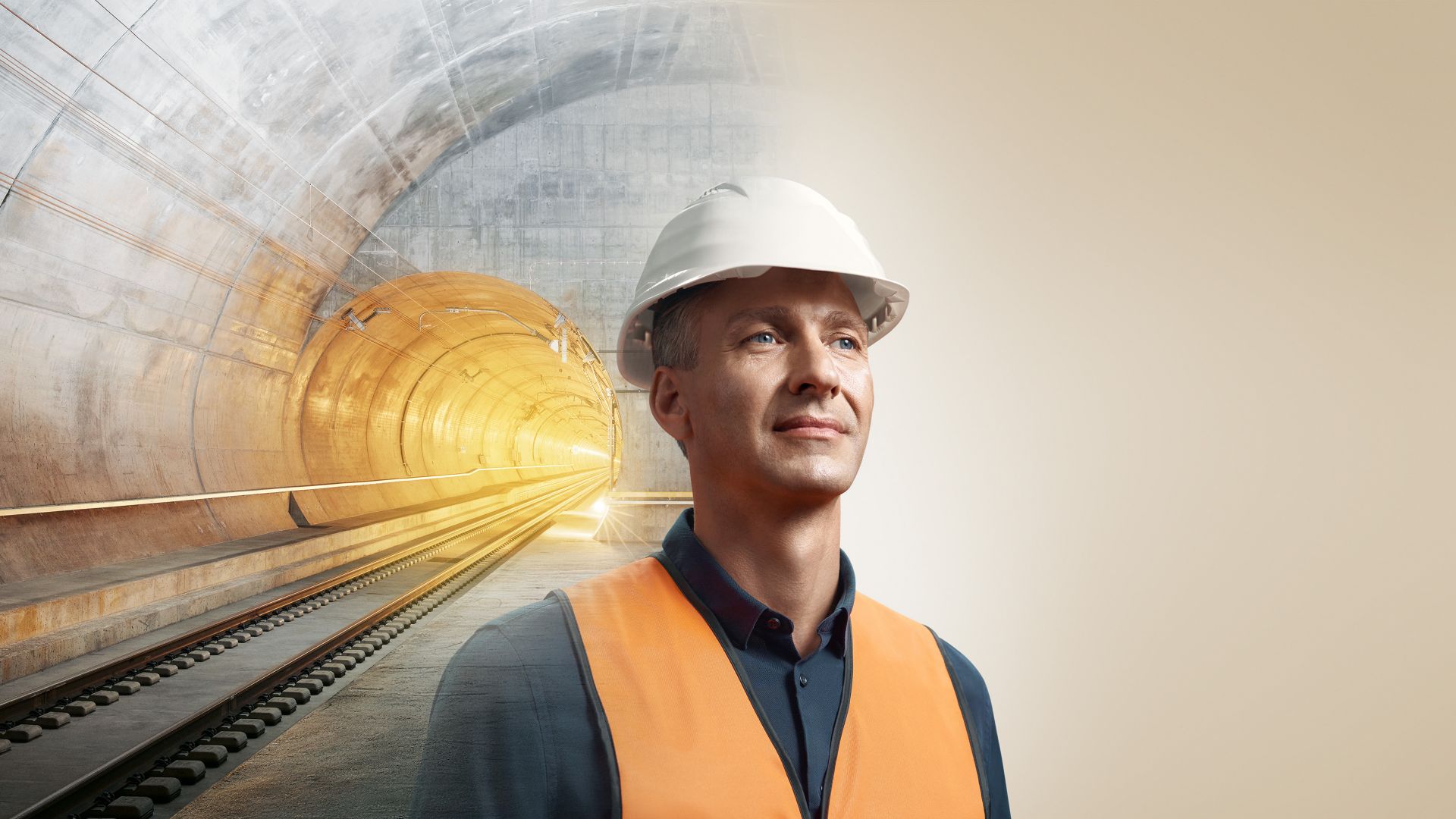Durability beyond the expected
Moving Mountains: The Tunnel that Conquered the Alps
The Gotthard Base Tunnel is an engineering marvel that conquered the barrier between northern and southern Europe. This new line, which opened in June 2016, reduced the journey time from Zurich to Lugano from 3.5 hours to 1 hour 50 minutes. At 57 kilometers, it is the longest rail tunnel and the deepest traffic tunnel in the world.
Invention of Sika 1
Since the 13th century, the Gotthard Pass has been an important trade route from northern to southern Europe. The original Gotthard railway was built in 1882. But in the early days, many passengers became sick as they ingested engine smoke during the 15-minute tunnel journey.
Therefore, the Swiss decided that they had to electrify the train to protect passengers’ health. This meant waterproofing the tunnel because any leaks would destroy the electricity. This is the main reason why Sika 1 was invented. By waterproofing the tunnel in 1918, Sika allowed the north-south axis railway to be electrified in 1922, marking the end of smoke-clogged journeys.
Admixtures for High Performance
In 1992, the Swiss voted to shift as much freight from trucks to trains as possible to ease traffic and protect the environment. To fulfil this mandate, work began on a new base tunnel in 1996 by AlpTransit, and Sika contributed heavily from the start.
However, the project faced several challenges. Workers faced temperatures up to 40 °C inside the mountain. Moreover, transport distances in the tunnel were very long – up to 30 kilometers. AlpTransit told Sika that they needed concrete usable for 8 hours. But in 1998, all admixtures in the world only lasted for about 2 hours.
This initiated a huge R&D process in the industry. After four years, Sika had achieved three important breakthroughs: Sika® ViscoCrete® superplasticizer for use with aggregates extracted from 100% tunnel excavation, the use of liquid alkali-free shotcrete accelerators Sigunit®-AF, and new slump retention polymers Sika ViscoFlow® for increased concrete workability time of up to 8 hours.
These developments made it possible to construct many of the most modern high-rises we see today, such as the Tokyo Skytree tower, the Mori Tower in Shanghai, the World Trade Center, One Vanderbilt in New York City, and many more.
Sika’s innovations have elevated the importance of admixtures in construction. Admixtures have become one of the most important components for achieving better performance in the processing and durability of concrete, the world's most important building material. About 20,000 tons of Sika admixtures were used for the base tunnel.
A Symbol for Durability
Ever since 1910, Sika has stood for durability. The company has developed admixtures that have made concrete durable for the past 100 years. The denser the concrete, the greater its resistance to stress. Therefore, low water content and modified binder composition are critical for high-performance concrete.
For the Gotthard Base Tunnel, Alptransit required a 100-year service life for the concrete and waterproofing systems. Sika’s high-grade shotcrete was used to stabilize the tunnel excavation and served as the base for Sikaplan® and Sarnafil® waterproof membranes. Overall, Sika supplied more than 40,000 tons of products, including over 3 million square meters of waterproofing systems.
With its innovative concrete additives and waterproofing solutions, Sika helps build infrastructure that lasts. This keeps life cycle costs low while enhancing safety and sustainability.
Legacy
It took 17 years and CHF 9.5 billion to complete the Gotthard Base Tunnel. But the effort has paid off. The tunnel has increased transport capacity from northern to southern Europe and shifted freight volumes from trucks to trains. This reduces the danger of accidents and minimizes environmental damage.
The tunnel cuts through more than just rock. It shortened the journey of goods and people between cultures and climates. The Alps strongly influence the climate, and there can be substantially different weather conditions at each end of the tunnel. During the fringe seasons of November or April, the temperature can be 15 °C warmer on the south side than the north. This adds magic to the trip and often invokes gasps from passengers who enter a new world in just 20 minutes.
With shorter journeys now possible between poles of Europe that are split by language, culture, values, cuisines, and much else, not only do we receive our shipments faster, but we also increase our cross-cultural understanding and hopefully absorb the best of both worlds.
Would you like to learn more about Sika solutions?

